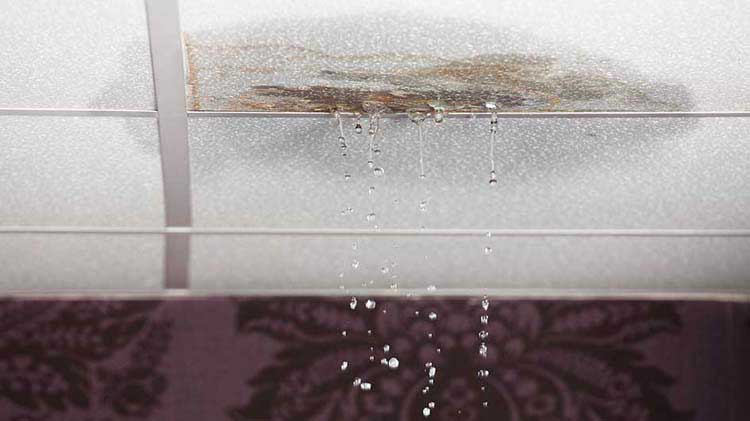On this page down the page you might get more high-quality data pertaining to How to detect water leaks in your home.

Leaks not just cause waste of water but can also trigger unneeded damages to your house and also advertise undesirable natural development. Unfortunately, water leakages may go undetected since a lot of the pipework in our residence is concealed. By looking and also recognizing for day-to-day circumstances that trigger leaks, you can protect your home from future leaks and unnecessary damages. Today, we will certainly check out 6 leakage triggers that may be causing your pipes to trickle.
Encroaching origins
A lot of water leaks begin outside your home as opposed to inside it. If you observe an abrupt decline in water pressure, say in your faucet, take time to head out as well as analyze your backyard. You could see damp patches or sinkholes in your lawn, which may indicate that tree roots are attacking water lines causing water to seep out. You can have your plumber look for intrusion, specifically if you have trees or bushes near your residential property.
Rusty water supply
As time goes by, your plumbing system ages and rust such as corrosion may start eating away the pipelines. This might be the root cause of staining or warping on your water pipes. This calls for an examination with your plumber instantly. Consider replacing the pipelines given that they are at a higher risk of corrosion than the newer versions if our plumbing system is old.
Malfunctioning Pipeline Joints
The factor at which your pipes connect is often the weakest link in the waterline. Pipeline joints can wear away over time, resulting in water leaks. The bulk of pipeline joints are not conveniently noticeable. If you have loud pipelines that make ticking or banging sounds, especially when the hot water is turned on, your pipe joints are probably under a lot of pressure. It is recommended to have your plumber inspect your system once a year.
Immediate temperature level adjustments.
Severe temperature level modifications in our pipelines can trigger them to expand and contract all of a sudden. This development and also contraction may trigger cracks in the pipes, especially if the temperature level are below freezing. If you maintained an eye on exactly how your plumbing works, it would certainly be best. The visibility of the formerly stated scenarios often indicates a high threat.
Poor Water Connectors
At times, a leak can be created by loose pipes and pipes that provide your home appliances. In instance of a water connections leakage, you may notice water running directly from the supply line or pools around your appliances.
Clogged Drains
Blocked drains pipes might be annoying and inconveniencing, yet they can sometimes wind up creating an overflow causing burst pipes. Maintain removing any type of products that might go down your drains pipes that can block them to stay clear of such inconveniences.
All the above are reasons for leaks yet not all water leaks result from plumbing leakages; some leakages might come from roof covering leakages. All leaks must be fixed promptly to stay clear of water damage.
Leaks not just cause waste of water but can likewise create unneeded damages to your home and promote undesirable organic growth. By understanding as well as looking for daily circumstances that create leakages, you can protect your home from future leaks and unnecessary damage. Today, we will look at 6 leak triggers that might be causing your pipelines to leak.
At times, a leakage can be created by loosened hoses and pipes that supply your home appliances. In situation of a water links leakage, you might observe water running straight from the supply line or pools around your appliances.
How To Check For Water Leak In Your Home
How To Check for Leaks
The average household's leaks can account for nearly 10,000 gallons of water wasted every year and ten percent of homes have leaks that waste 90 gallons or more per day. Common types of leaks found in the home are worn toilet flappers, dripping faucets, and other leaking valves. These types of leaks are often easy to fix, requiring only a few tools and hardware that can pay for themselves in water savings. Fixing easily corrected household water leaks can save homeowners about 10 percent on their water bills.
To check for leaks in your home, you first need to determine whether you're wasting water and then identify the source of the leak. Here are some tips for finding leaks:
Take a look at your water usage during a colder month, such as January or February. If a family of four exceeds 12,000 gallons per month, there are serious leaks.
Check your water meter before and after a two-hour period when no water is being used. If the meter changes at all, you probably have a leak.
Identify toilet leaks by placing a drop of food coloring in the toilet tank. If any color shows up in the bowl after 10 minutes, you have a leak. (Be sure to flush immediately after the experiment to avoid staining the tank.)
Examine faucet gaskets and pipe fittings for any water on the outside of the pipe to check for surface leaks.
Undetected water leaks can happen without the home or business owner even realizing. If you suspect a water leak, but not able to find the source. It is time to contact a professional water leak detection service, The Leak Doctor.
How To Find a Water Leak In Your Home
https://www.leakdoctor.com/blog/How-To-Check-For-Water-Leak-In-Your-Home_AE197.html

I was made aware of that editorial about How Fast Water Damage Can Ruin Your Home from a friend on a different domain. Liked our blog? Please share it. Let somebody else discover it. We enjoy reading our article about Top Causes of Home Water Leaks.
Seek immediate plumbing assistance now.